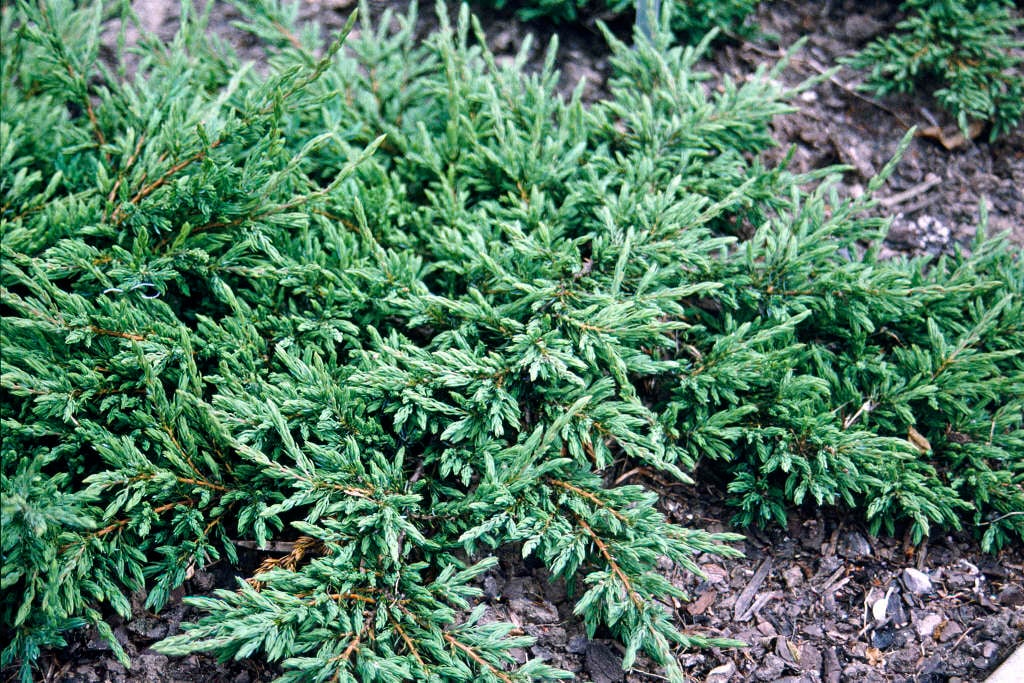Size
Ultimate height
0.1–0.5 metresTime to ultimate height
10–20 yearsUltimate spread
1.5–2.5 metresGrowing conditions
Moisture
Well–drainedpH
Acid, Alkaline, NeutralColour & scent
| Stem | Flower | Foliage | Fruit | |
| Spring | Green | |||
|---|---|---|---|---|
| Summer | Green | |||
| Autumn | Green | |||
| Winter | Bronze Green |
Position
- Full sun
- Partial shade
Aspect
South–facing or West–facing or East–facing
Exposure
Exposed or ShelteredDrought resistance
Yes Hardiness
H7Botanical details
- Family
- Cupressaceae
- Native to GB / Ireland
- No
- Foliage
- Evergreen
- Habit
- Matforming
- Potentially harmful
- Skin allergen, wear gloves and other protective equipment when handling
- Genus
Juniperus can be prostrate or erect, evergreen shrubs or trees with aromatic, scale-like or sharply pointed awl-shaped leaves, and small globose fruits
- Name status
Accepted
How to grow
Cultivation
Grow in any well-drained soil including dry, chalky or sandy soils in full sun or light dappled shade. See conifer cultivation for further advice
Propagation
Propagate by semi-hardwood cuttings
Suggested planting locations and garden types
- Coastal
- Cottage and informal garden
- Low Maintenance
- Banks and slopes
- Ground cover
Pruning
No pruning required
Pests
May be susceptible to aphids, juniper scale and caterpillars
Diseases
May be susceptible to phytophthora, canker and honey fungus. See also Conifers: brown patches
Love gardening
Sign up to receive regular gardening tips, inspiration, offers and more
View our Privacy Policy
Get involved
The Royal Horticultural Society is the UK’s leading gardening charity. We aim to enrich everyone’s life through plants, and make the UK a greener and more beautiful place.
